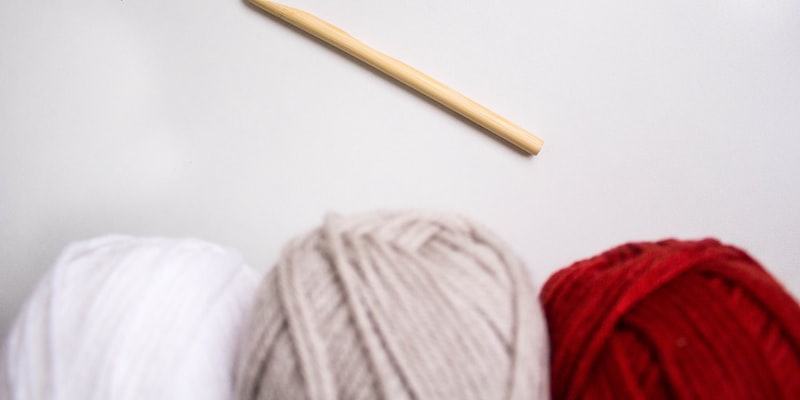How does yarn weight affect the outcome of knitting projects?

A Beginner's Guide to Understanding Yarn Weight and Its Impact on Knitting Projects
Choosing the right yarn weight for your knitting project can be daunting, especially if you’re a beginner. Different weights of yarn can produce different results and affect the outcome of your project. Understanding the different yarn weights and how they affect the outcome of a project is key to successful knitting.Yarn weights are categorized into six categories, ranging from thin lace to thick bulky yarns. Each weight of yarn has its own characteristics and will produce different results when used in a knitting project. For example, lace yarn is thin and lightweight, and is perfect for creating delicate, lacy patterns. On the other hand, bulky yarn is thick and chunky, and is ideal for creating warm and cozy garments.
When selecting yarn for a project, it’s important to pay attention to the recommended yarn weight. Most patterns will specify what type of yarn should be used in order to achieve the desired results. Choosing the right yarn weight can make the difference between a successful project and a disaster. If you’re using a pattern that calls for a specific weight of yarn, it’s important to stick to that weight.
It’s also important to remember that yarn weights are relative. Some yarns are heavier than others, even within the same weight category. For example, a Super Bulky yarn may be heavier than a Bulky yarn. In this case, the pattern should be adjusted to accommodate the heavier yarn.
The type of yarn you choose will also have an impact on the outcome of your project. Different fibers have different properties, and can produce different results. For example, wool yarn is warmer and more breathable than acrylic yarn, and will produce a different texture when knitted.
Understanding yarn weight and its impact on knitting projects can go a long way towards producing successful projects. Paying attention to the recommended yarn weight, as well as the properties of different fibers, can help you create projects that are exactly what you want.
Exploring the Different Types of Yarn Weights and Their Effects on Knitting Projects
When it comes to knitting projects, the type of yarn used can have a big impact on the overall result. Yarn weight is an important factor to consider when selecting the right material for your project. Different yarn weights can create different textures, shapes, and sizes of knitted pieces. From chunky sweaters to delicate lace, choosing the right yarn weight can make all the difference in the look and feel of your project.There are six different categories of yarn weight, ranging from the finest lace weight yarn to the thickest jumbo yarn. Each weight has its own characteristics and best uses.
Lace weight yarn is the thinnest type, and is usually made from merino wool, alpaca, or mohair. This type of yarn is perfect for delicate projects like lace shawls, lace edging, and lightweight garments. The slight stretchiness of lace weight yarn also makes it ideal for blocking, as it will keep its shape even after being stretched.
Fingering weight yarn is slightly thicker than lace weight and is best for lightweight garments and accessories. This type of yarn is usually made from merino, cotton, or silk. It is also great for baby garments and can be used to create intricate stitch patterns.
Sport weight yarn is thicker than fingering weight, but still light enough for garments. This type of yarn is usually made from wool, cotton, acrylic, and silk. It is perfect for making sweaters, shawls, and other projects that require a bit of warmth.
DK weight yarn is a bit thicker than sport weight, and is usually made from wool, cotton, acrylic, and alpaca. This type of yarn is ideal for projects that require a bit more structure, like hats, sweaters, and accessories. The thickness of DK weight yarn also makes it a great choice for blankets and heavier garments.
Worsted weight yarn is thicker than DK weight and is usually made from wool, cotton, and acrylic. This type of yarn is great for sweaters, hats, mittens, and other projects that require a medium weight fabric.
Bulky weight yarn is the thickest yarn weight and is usually made from wool, cotton, and acrylic. This type of yarn is perfect for making chunky sweaters, scarves, and other projects that require a lot of warmth. It is also great for quick projects, as bulky weight yarn works up quickly.
Choosing the right yarn weight for your project is essential for achieving the desired result. Different yarn weights produce different textures, shapes, and sizes, so it is important to select the right type for your project. Knowing the different yarn weights and their characteristics can help you create the perfect knitted piece.
